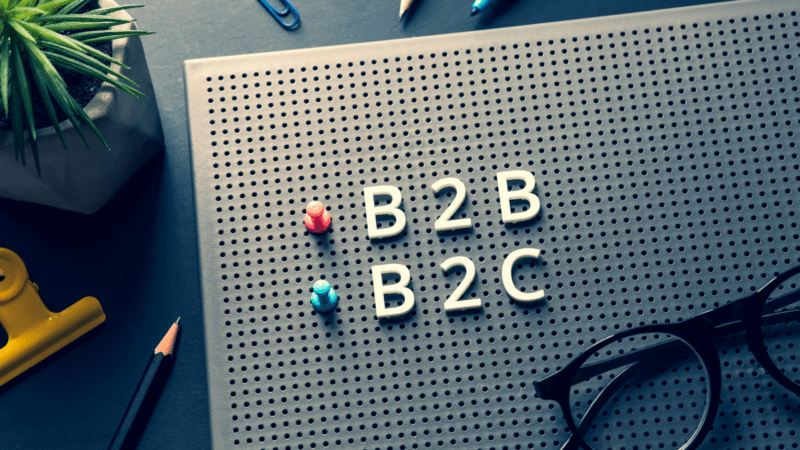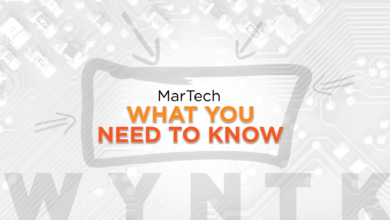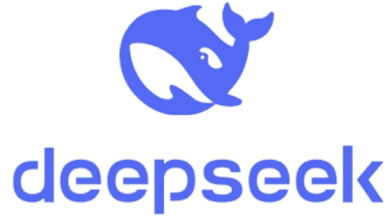5 ways B2B differs from B2C — and 3 ways they align

Many marketers tend to oversimplify the differences between B2B and B2C by claiming that it’s all “business to human.” While ultimately all marketing targets people, it’s important to acknowledge the significant distinctions between these two disciplines. Just as marketing luxury goods differs from selling everyday items, B2B and B2C require unique approaches in terms of marketing technology and strategies.
The differences between B2B and B2C are profound. They impact how buying decisions are made, the length of sales cycles, and the emotional aspects involved. Understanding these distinctions is crucial for marketers to excel in their respective fields.
5 reasons B2B isn’t B2C
1. B2B purchases are usually made by a group rather than an individual
In B2B marketing, catering to the diverse needs of a buying committee presents a clear challenge. This poses a significant obstacle for marketers, as even advanced martech solutions struggle to provide a comprehensive view of the buying committee.
However, this complexity is why tools like marketing automation are more widely used in B2B than B2C. They are essential for managing complex buying processes, and the wealth of data in B2B makes them much more effective.
2. B2B purchases have long sales cycles
While some consumer purchases have lengthy sales cycles, they rarely compare to the extended durations seen in B2B. For instance, a company selling baggage handling systems to airports may have sales cycles ranging from six to 20 years. Navigating and engaging customers through such prolonged buyer journeys is a major challenge in B2B marketing.
3. Organizations implement systems and processes to make purchases logical
In the B2B realm, numerous spreadsheets, scorecards, and analytics are used to evaluate the cost and benefits of products and assess the vendors. If the right information isn’t presented in a compelling manner, a potential customer may view your company as the wrong choice.
This differs greatly from B2C, where decisions are not typically made based on extensive spreadsheets. Delivering the correct technical information to customers is a critical aspect of B2B marketing from a martech perspective.
Dig deeper: Not all B2B and B2C categorizations are alike
4. The emotional drivers in B2B differ from B2C
Consumer purchases often stem from emotional factors like status or the desire to alleviate stress. In contrast, B2B’s emotional drivers are distinct, with the fear of making the wrong decision playing a significant role. While risk reduction strategies are part of both buying scenarios, they hold more weight in B2B.
For example, customers buy tickets to events based on excitement and anticipation, not solely on avoiding disappointment. In B2B, overselling can lead customers to perceive a high risk of disappointment and steer clear of a product. In B2C, as long as the customer believes you, that’s what matters—unless repeat purchases are a concern.
There are instances where risk reduction is crucial in B2C, such as with airlines. No one wants to fly on an unsafe plane. However, many marketers in these sectors focus primarily on price competition rather than addressing customer anxieties.
5. The value of B2B sales is much higher than B2C
The substantial value of B2B sales compels marketers to invest considerable time in understanding customers’ needs and creating personalized content. With account-based marketing, this personalization can be tailored to target individual customers. In contrast, B2C transactions typically involve lower values but cater to a larger audience. The personalization demands in B2B are far greater in terms of martech, necessitating extensive data to effectively profile and engage each individual.
3 ways B2B overlaps with B2C
It’s a misconception to view B2B as entirely separate from B2C, as both ultimately involve humans. B2B marketers should reflect on whether they are delivering the same engaging experiences that B2C marketers excel in creating.
When we deliver uninspired campaigns that lack emotional resonance, we risk losing potential buyers. Recognizing the similarities between these two disciplines and striving to infuse creativity and emotional appeal into B2B campaigns are vital steps towards improvement.
1. It really is all ‘business-to-human’
While organizations may try to remove emotion from purchases through systems and processes, human involvement is inevitable. Decisions are never purely logical; triggering positive emotions in potential customers is essential to avoid losing sales.
2. B2B customers’ motivations are soft, not hard
Despite the processes in place, everyone in the buying committee is driven by factors that influence their decisions. Motivations like status, career advancement, or skill development may make one vendor more appealing than others. B2B marketers can benefit from gathering and leveraging this data, learning from the practices of consumer marketers.
3. Expectations are changing
Research by Gitnux indicates that about 80% of B2B buyers now expect the same buying experience as B2C customers. B2B customers seek creative, engaging, and helpful campaigns rather than traditional, formal approaches. B2B is evolving, and marketers must adapt to meet the changing expectations for creativity, engagement, and personalization.
Unpacking the realities of B2B and B2C marketing
Despite the evolving landscape, dropping a B2C campaign into a B2B martech stack will not yield optimal results. B2B marketers must provide tailored information to a larger audience involved in the purchase process while managing the factors that influence people at work and enduring lengthy sales cycles. By embracing the diversity of these marketing disciplines and incorporating the best elements of B2C campaigns, B2B marketing can stay relevant and engaging for its audience.
FAQs
1. What are the key differences between B2B and B2C marketing?
The key differences between B2B and B2C marketing lie in the decision-making process, sales cycles, emotional drivers, and value of sales. B2B marketing typically involves group purchases, longer sales cycles, logical decision-making with extensive data analysis, distinct emotional drivers, and higher sales values compared to B2C.
2. How do B2B and B2C marketing overlap?
While B2B and B2C marketing have distinct characteristics, they also share common ground in targeting human audiences. Both require engaging experiences, emotional connections, and personalized approaches to appeal to customers. B2B marketers can learn from B2C practices to enhance their campaigns.
3. What are the evolving expectations in B2B marketing?
Research suggests that B2B buyers increasingly expect the same level of creativity, engagement, and personalization as B2C customers. Traditional, formal approaches are no longer sufficient, and B2B marketers must adapt to deliver innovative and helpful campaigns that resonate with their audience.
4. How can B2B marketers improve their campaigns?
B2B marketers can enhance their campaigns by focusing on emotional resonance, gathering data on customer motivations, and delivering engaging experiences. Understanding the similarities between B2B and B2C marketing can help marketers infuse creativity and personalization into their strategies to better connect with their audience.
5. Why is it important for B2B marketers to adapt?
Adaptation is crucial for B2B marketers to stay relevant and meet the changing expectations of their audience. By incorporating elements of B2C practices, embracing creativity, and enhancing personalization, B2B marketers can ensure that their campaigns remain engaging and effective in the evolving marketing landscape.
Contributing authors are invited to create content for MarTech and are chosen for their expertise and contribution to the martech community. Our contributors work under the oversight of the editorial staff and contributions are checked for quality and relevance to our readers. The opinions they express are their own.




